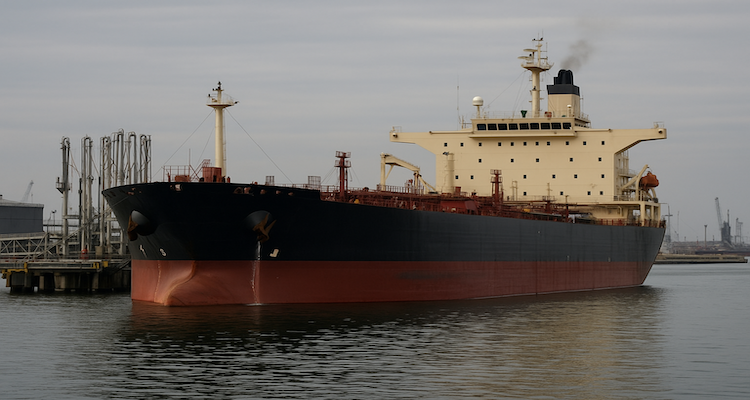U.S. Sanctions Squeeze Russia’s Oil Giants as Global Buyers Pull Back
New U.S. sanctions on Rosneft and Lukoil are cutting into Russia’s oil revenue as major buyers in China and India scale back purchases, tightening global pressure.
A New Financial Squeeze on Moscow
The United States has escalated its economic pressure on Moscow, and early signs suggest the strategy is starting to bite. Fresh sanctions targeting Russia’s biggest state-linked oil companies are already dragging down the price of Russian crude and narrowing the Kremlin’s revenue stream, an outcome Washington says is central to weakening Russia’s war effort in Ukraine.
A Harder Line on Russian Energy
The Treasury Department’s newest measures, unveiled on October 22, represent some of the most forceful U.S. penalties since Russia launched its full-scale invasion of Ukraine in 2022. While previous restrictions focused heavily on financial institutions and military suppliers, this round directly targets the heart of Russia’s economy: its oil sector.
Rosneft and Lukoil, two of the country’s largest producers, now face a November 21 deadline for international firms to unwind business dealings. Companies that continue to trade with them risk being shut out of the U.S. dollar–based financial system, the backbone of global commerce.
This marks the first time President Donald Trump has imposed direct energy sanctions on Russia since taking office, an escalation that signals Washington’s growing impatience with Moscow’s continued aggression.
Prices Fall, Buyers Retreat
A new assessment from the Treasury’s Office of Foreign Assets Control (OFAC) indicates the sanctions are delivering their intended effect. According to OFAC, market analysis shows Russian crude is now trading at multi-year lows, reducing the revenue Moscow depends on to fund its military campaign.
The impact is being felt most dramatically in the pricing of key Russian grades. On November 12, Urals crude loaded at the Black Sea port of Novorossiysk tumbled to $45.35 per barrel, its lowest level since March 2023. At that time, Russia was scrambling to build a “shadow fleet” of tankers to dodge the G7’s $60 per-barrel price cap.
Benchmark Brent crude, by comparison, stood at $62.71 per barrel on November 12 and traded above $64 on Monday, a widening gap that underscores the pressure on Russian supply.
Although shipments from Novorossiysk have recently resumed following Ukrainian drone and missile strikes, the rebound in prices has been limited. Urals crude rose only modestly, reaching $47.01 on Monday.
What’s pushing prices down even further is the reaction from key customers. According to OFAC, nearly a dozen major refiners in China and India, Russia’s two most important crude buyers have signaled plans to halt or scale back purchases for December delivery. Reuters previously reported expanding discounts on Russian oil as companies in both countries reassessed the risk of falling foul of U.S. sanctions.
Washington Sees Momentum
A Treasury spokesperson framed the developments as a sign that the U.S. strategy is working. In a sharp rebuke of the Kremlin, the spokesperson said the sanctions are “starving Putin’s war machine,” adding that Washington is prepared to “take further action if necessary to end the senseless killing” in Ukraine.
That sentiment reflects a broader U.S. belief that draining Russia’s oil revenue, its largest source of foreign income could erode the country’s ability to sustain a prolonged, high-cost conflict.
Still, a key question looms: How aggressively will the U.S. enforce the measures? With China and India remaining Russia’s largest buyers, any attempt to penalize firms in those countries could raise diplomatic tensions.
A Long-Term Hit to Russia’s Energy Sector
While the sanctions’ long-term effect remains uncertain, early signals point toward a sustained decline in both pricing power and export volume for Russian producers. Lower prices mean slimmer profits, which could translate into reduced investment, slower production growth, and a shrinking role in global energy markets over time.
For Russia, the volatility comes at a critical moment. The country has already been forced to rely on an opaque network of intermediaries, off-the-books tankers, and alternative financial channels to maintain oil exports since the G7 price cap went into effect in December 2023. Additional restrictions could further complicate those efforts.
For global markets, the situation is more nuanced. While Russian crude continues to flow, deeper discounts may reshape the competitive landscape, particularly in Asia, where price-sensitive buyers have used Russia’s isolation to secure bargain barrels. If those buyers retreat in response to sanctions pressure, Russia’s ability to place its oil could be significantly undermined.
Sanctions Bite, But Bigger Battles Loom
The Biden administration appears confident that its latest sanctions package is undermining Russia’s financial ability to wage war. With crude prices dropping and major buyers stepping back, Washington is signaling that it’s willing to tighten the screws even further.
The coming months will show whether this pressure reshapes Russia’s energy strategy or prompts new geopolitical friction as global powers navigate the fallout.
ALSO READ: Oil Markets Hold Steady as Russia Restarts Exports










